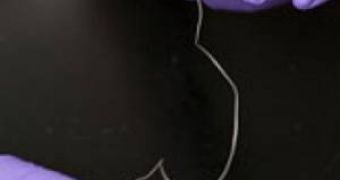Experts have recently hinted at a new way of ensuring a fast and complication-free healing process when sutures are involved. Biomedical engineering students from the Johns Hopkins University (JHU) have embedded patients' own adult stem cells into the wires they used for sutures, a feat that they say would ensure a faster healing process, as the stem cells will differentiate into the most appropriate type of tissue when they are placed near the wound. They designed the technique especially for orthopedic procedures such as ruptured tendons, which are notoriously difficult to handle and treat.
The creators of the new method believe that the system could be implemented in humans within five years, which is fairly short, as far as new, still-experimental treatments go. Their preliminary work was conducted on animal models, which seemed to handle the procedure remarkably well. For its work, the ten-student team won the first place in the Design Day 2009 competition, set up by the JHU Department of Biomedical Engineering. Its work was sponsored by Maryland-based medical technology company Bioactive Surgical Inc.
“Using sutures that carry stems cells to the injury site would not change the way surgeons repair the injury, but we believe the stem cells will significantly speed up and improve the healing process. And because the stem cells will come from the patient, there should be no rejection problems,” the leader of the student group, Matt Rubashkin, explains.
“After surgery, the recovery process can take up to a year. In about 20 percent of the cases, the surgery fails, and another operation is needed. Anything we can do to speed up the healing and lower the failure rate and the additional medical costs could make a big difference,” he adds. Rubashkin will begin his senior year at the university this fall.
“These students have demonstrated an amazing amount of initiative and leadership in all aspects of this project, including actually producing the suture and designing the ensuing mechanical, cell-based and animal trials. The students exceeded all expectations. They have probably cut at least a year off of the development time of this technology, and they are definitely advancing the science in this emerging area,” JHU School of Medicine Assistant Professor of Orthopedic Surgery Lew Schon, who is one of the leading Baltimore foot and ankle surgeons, adds.

 14 DAY TRIAL //
14 DAY TRIAL //